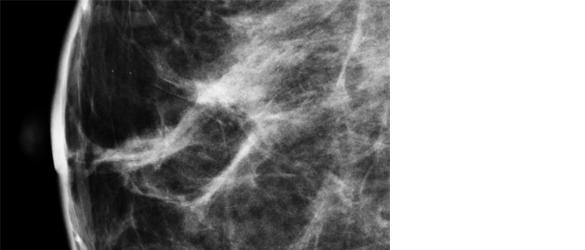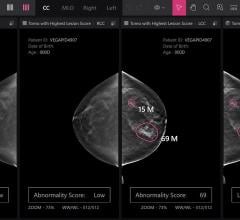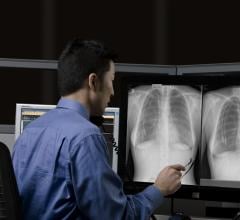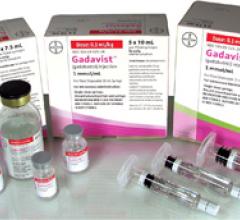Governor Deval Patrick has signed Massachusetts’ breast density inform bill into law (Chapter 150) this week, making Massachusetts the 18th state to enact a such legislation.
Call-backs have always been a problem in mammography. They are a source of worry, added discomfort, well-founded patient complaints about the inefficiency of breast exams, and unnecessary cost. More than that, they call into question the credibility of an exam whose use depends on women’s belief in its value.
Data from a new study of more than 170,000 examinations using 3-D mammography (breast tomosynthesis) screening technology finds 3-D significantly more invasive cancers than a traditional 2-D mammogram. The researchers also found that 3-D mammography reduces the number of women called back for unnecessary testing due to false alarms. The study was published in the June 25, 2014 issue of the Journal of the American Medical Association (JAMA).
Radiology departments have many different needs and face a wide variety of challenges that can impact their departments ...
Thanks to its excellent dielectric properties and a reliable surface finish, a high-quality alumina ceramic from Morgan Advanced Materials is now being successfully used in radiotherapy equipment for oncology treatment.
NYU Langone Medical Center is now using a novel technology that serves as a "flight simulator" for neurosurgeons, allowing them to rehearse complicated brain surgeries before making an actual incision on a patient.
Shimadzu Medical Systems USA has announced that its Dallas-headquartered direct sales and service division has expanded its territory to include the western half of the state of Arkansas.
Despite decades of progress in breast imaging, one challenge continues to test even the most skilled radiologists ...
Researchers have announced the results of a study that used speckle-tracking echocardiography (STE) to analyze early phase one results from the multi-center COMPASSION trial, which seeks to examine the safety and efficacy of a new option to replace dysfunctional pulmonary valves in a subset of congenital heart disease patients.
June 23, 2014 — Researchers have announced the results of a study that used contrast ultrasound molecular imaging (CMI) to examine a relatively new role for platelets at early to mid stages of atherosclerosis. Atherosclerosis, or hardening of the arteries due to plaque buildup, can lead to many serious health problems, including stroke and coronary heart disease.
June 23, 2014 — Researchers have announced the results of a four-year study that used 3-D echocardiography to examine the role of mid left atrial cross sectional area (LACSA) as a risk factor for cardioembolic (CE) stroke, atrial fibrillation (AF) and stroke recurrence.
Bayer Radiology’s Barbara Ruhland and Thom Kinst discuss how radiology departments can address the many different ...
DAIC Editor Dave Fornell shares his choices for the most innovative new technologies in nuclear imaging that were on ...
Mobius Imaging LLC received two prestigious and internationally recognized honors for its AIRO Mobile Intraoperative CT (computed tomography) system: a 2014 Red Dot Product Design Award and selection as a finalist in 17th annual Medical Design Excellence Awards competition.
Oxford University researchers funded by Parkinson's UK have developed a simple and quick magnetic resonance imaging (MRI) technique that offers promise for early diagnosis of Parkinson's disease.
eHealth Saskatchewan plays a vital role in providing IT services to patients, health care providers, and partners such ...
The doctors and staff of the Indiana University Health Proton Therapy Center in Bloomington, Ind., have collaborated with Indy Composite Works (ICW) to design and manufacture a customized carbon fiber patient treatment table that has significantly improved the flexibility and precision of proton therapy while increasing patient comfort.
A simple noninvasive blood test matched with state-of-the-art molecular imaging of individual cells could help oncologists understand their patients’ chances of survival, said researchers at the 2014 annual meeting of the Society of Nuclear Medicine and Molecular Imaging (SNMMI).
Bayer HealthCare announced the U.S. Food and Drug Administration (FDA) approved a new indication for Gadavist (gadobutrol) injection for intravenous use with magnetic resonance imaging (MRI) of the breast to assess the presence and extent of malignant breast disease. The approval is based on priority review of two multicenter, Phase III studies (GEMMA-1 and GEMMA-2) conducted in 13 countries.
Patients with advanced breast cancer that may have spread to their lymph nodes could benefit from a more robust dose of a molecular imaging agent called Tc-99m filtered sulfur colloid when undergoing lymphoscintigraphy, a functional imaging technique that scouts new cancer as it begins to metastasize. Best results also indicate that imaging could be improved by injecting the agent the day prior to surgical resection, according to research unveiled at the 2014 annual meeting of the Society of Nuclear Medicine and Molecular Imaging (SNMMI).
There were several interesting studies coming out of the 2014 meeting for the Society of Nuclear Medicine and Molecular Imaging (SNMMI) in St. Louis, Mo. On the show floor, the main news was that all the key vendors introduced new PET/CT systems for the market.
Satoshi Minoshima, M.D., Ph.D., chairman of the Society of Nuclear Medicine and Molecular Imaging Scientific Committee ...
Elekta and Royal Philips announced that The Institute of Cancer Research, London, a world-leading cancer research institution, working with its clinical partner The Royal Marsden NHS Foundation Trust, will join the Elekta MR Linac Research Consortium, a group with a mission to develop an integrated magnetic resonance imaging (MRI)-guided radiation therapy system.
A simple noninvasive blood test matched with state-of-the-art molecular imaging of individual cells could help oncologists understand their patients’ chances of survival, said researchers at the Society of Nuclear Medicine and Molecular Imaging’s 2014 Annual Meeting (SNMMI).


 June 27, 2014
June 27, 2014 









